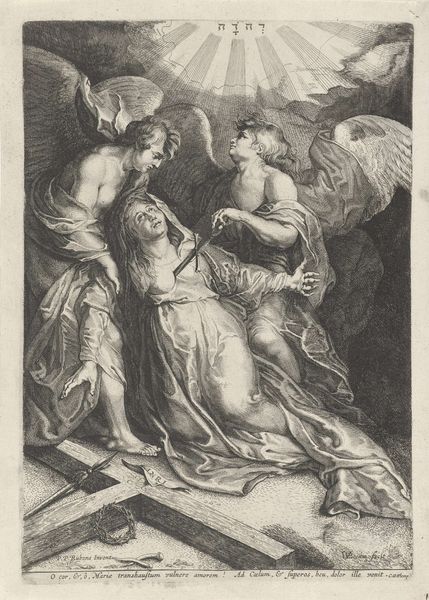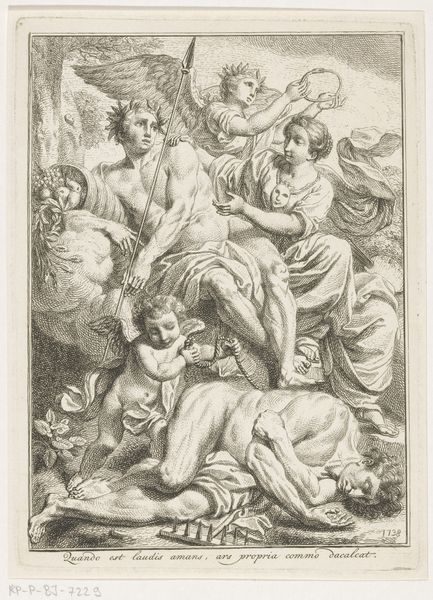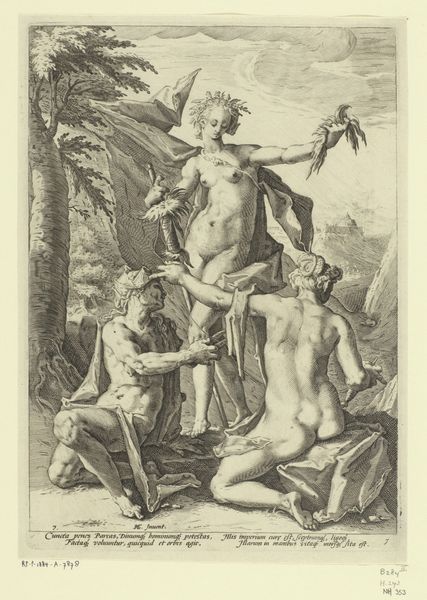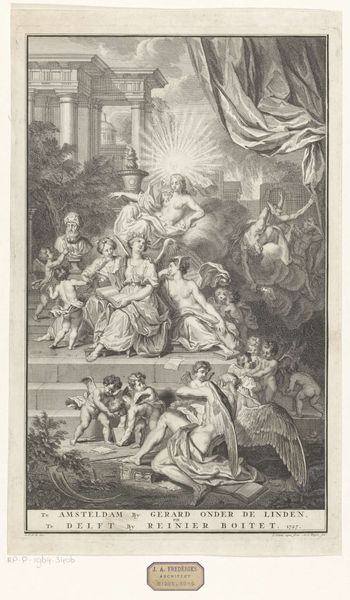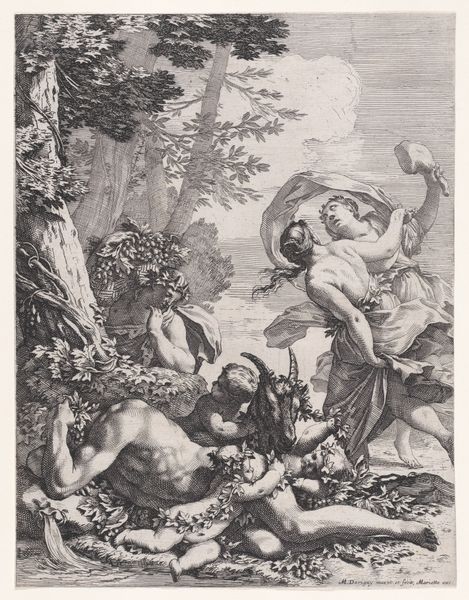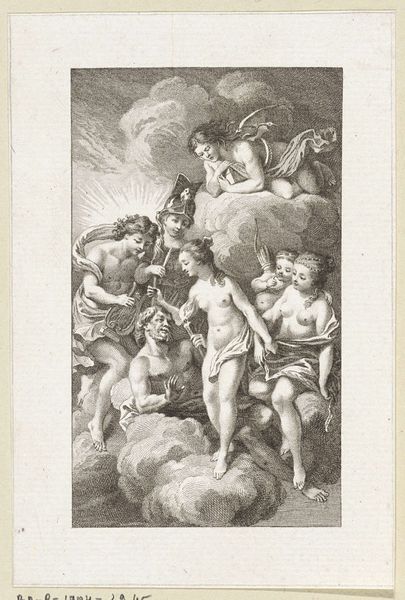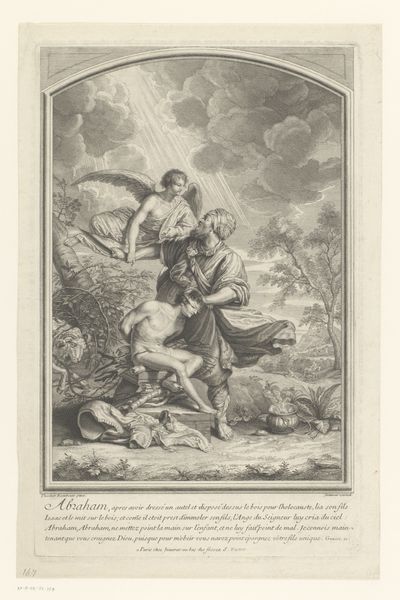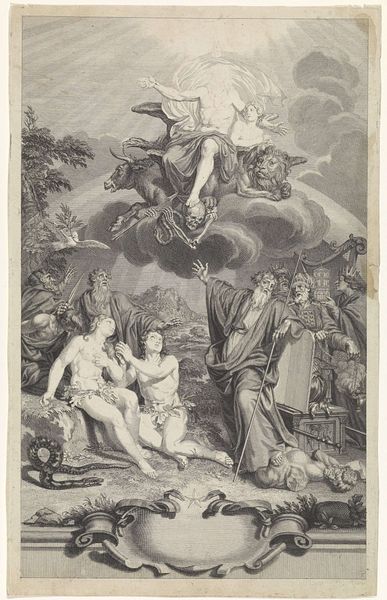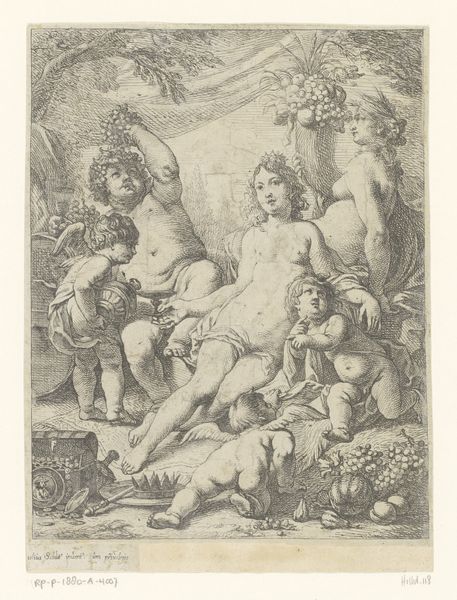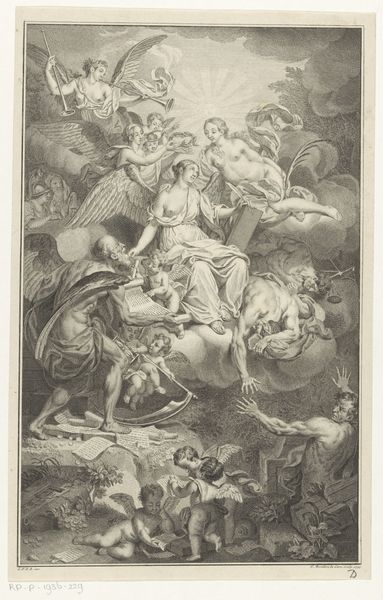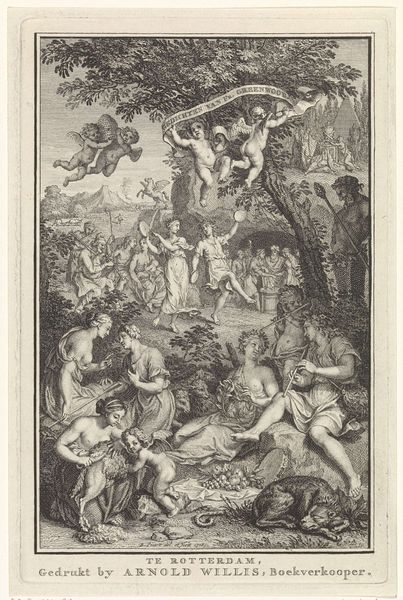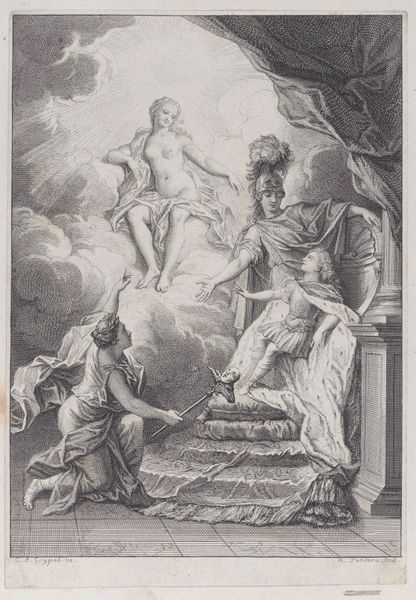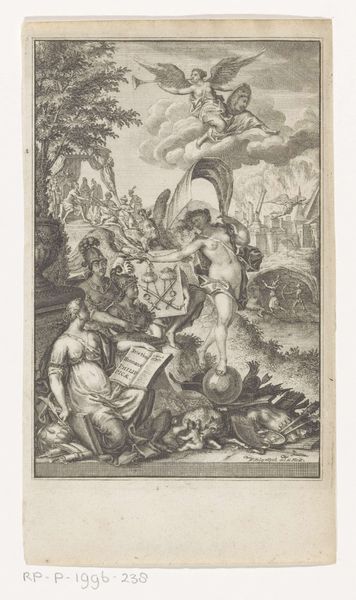
Dimensions: height 158 mm, width 105 mm
Copyright: Rijks Museum: Open Domain
Curator: This engraving, dating from 1774, is entitled "Waarheid schrijft geschiedenis," or "Truth Writes History," and is by Joseph de Longueil. I am immediately drawn to its allegorical scene and detailed composition, which exemplify the Baroque style in printmaking. Editor: Baroque, indeed! The dynamic tension in this composition grabs the eye. It’s like a struggle—we’ve got a collapsing, struggling figure at the bottom and light pouring in at the top. An almost performative display of truth. Curator: Note how De Longueil orchestrates the visual hierarchy: the radiance emanating from the allegorical figure of Truth illuminates the scene, guiding our gaze from the shadows of the vanquished figure, presumed to be Falsehood, toward the light. The sharp contrast, so vital in Baroque art, structures meaning here. Editor: The power dynamic is palpable. The figures of Truth and History are actively subjugating another; it certainly says something about the societal pressures placed upon "history" in the 18th century. An engraving like this presents an overt and forceful claim: history should only record truth. Curator: True. And in strictly formal terms, look at the exquisite linework. It builds texture, mass, and tonality so expertly that the print almost seems painterly. Observe how each engraved line articulates a narrative of revelation, each flourish either unveils or obscures, contributing to the piece’s powerful binary structure. Editor: This speaks to how art can function as propaganda, actively shaping public perception of reality. Here, we see Truth being physically embodied and imposing its narrative through both action and presence. It really reveals how notions of ‘truth’ were not passive discoveries, but things to be constructed. Curator: It does encourage reflection on the complex ways artistic representation impacts our interpretation of historical fact, especially how aesthetics are not just ornamental but essential to delivering the message. Thank you for shedding new light on it for me. Editor: Likewise, I find myself intrigued to delve more into Longueil's wider historical context—wondering about the specifics of the world which sought comfort in such blatant visual metaphors.
Comments
No comments
Be the first to comment and join the conversation on the ultimate creative platform.

